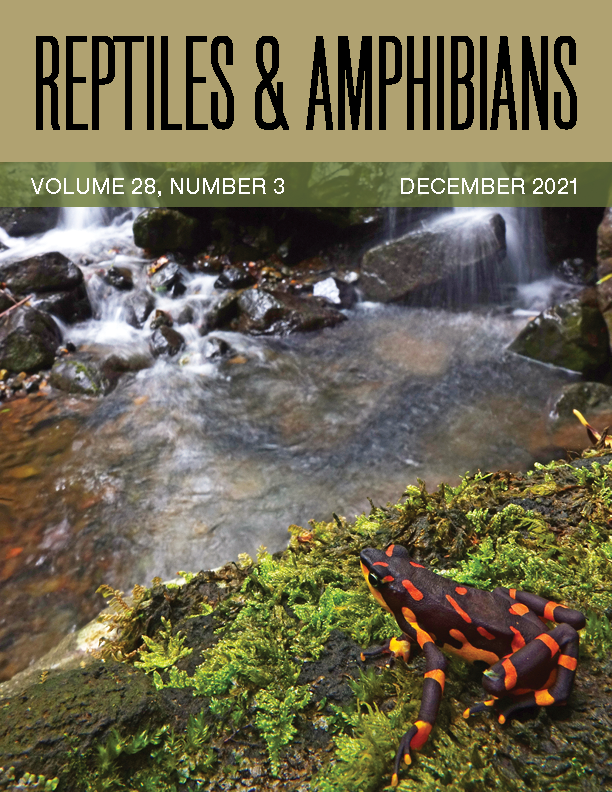Distribution, habitat use, and nesting behavior of the King Cobra (Ophiophagus hannah) in the Trashigang Forest Division, Eastern Bhutan
DOI:
https://doi.org/10.17161/randa.v28i3.15786Keywords:
distribution, King Cobra, vulnerable, altitude, incubation, incubatiion time, hatching successAbstract
The King Cobra, Ophiophagus hannah (Cantor 1836), is the longest venomous snake in the world; it is globally threatened and has been categorized as Vulnerable (VU) on the IUCN Red List. Herein we describe distribution, habitats, and nesting behavior of the King Cobra in Trashigang Forest Division, Bhutan. We recorded a total of 18 King Cobras during the one-year survey period. The elevational distribution was 650–2,057 m but most sightings were at lower elevations. King Cobras did not appear to prefer or avoid any particular habitat type but most records were from areas where human disturbances were at a minimum. We monitored a nest containing 37 eggs that was actively guarded by a female. This study was the first of its kind in Trashigang Forest Division and we hope that the information obtained will help formulate appropriate conservation strategies for this globally threatened species.
Downloads
Published
Versions
- 2021-11-26 (2)
- 2021-11-25 (1)
Issue
Section
License
Copyright (c) 2021 Bal Krishna Koirala, Dawa Tshering

This work is licensed under a Creative Commons Attribution-NonCommercial 4.0 International License.
Copyright is held by the authors. Articles in R&A are made available under a Creative Commons Attribution-NonCommercial 4.0 International license.

